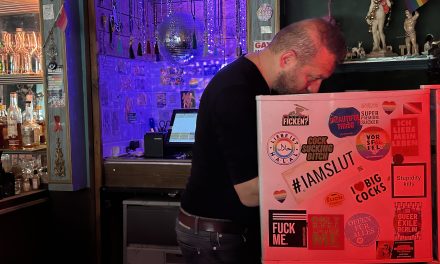When you visit Berlin, and especially one of its many tourist shops, there is a certain object that you will find everywhere – pieces of the Berlin Wall. They are glued on to magnets, put on pedestals, in glass domes. You can’t help but wonder, are they actually real?
Souvenirs have always been an important part of travelling, and the word souvenir even means “memory” in French. Something that is heavily incorporated in the tourist culture of Berlin is to bring a piece of the Berlin wall home after your trip.
“The Berlin Wall is, after all, an iconic attraction. And it also has a strong connection to the local culture. If you can make money from it in a legal way, it’s a no brainer marketwise”, says Erik Lundberg, Head of Centre for Tourism at University of Gothenburg.
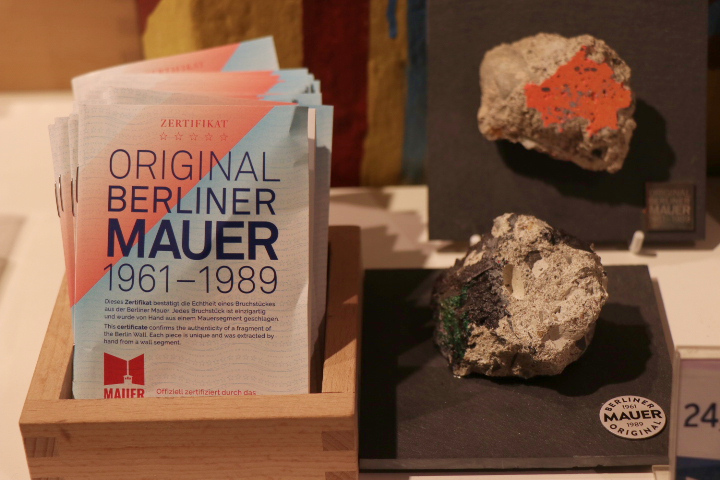
“We also have a certificate, the pieces of the wall are ours, so I can sign a certificate that says that they are real”, Alexandra Hildebrandt, director of the museum says and continues, “If I would be a visitor here in Berlin, I would also like to have a little piece of the wall as a symbol”.
He says that a well experienced traveller usually wants a different souvenir than a person who visits a place for the first time. The first time-visitors want something that is easy to access in a tourist shop, which could be a magnet, a mug – or a piece of the Berlin wall. The well experienced traveller usually wants something more local, more unique as they try harder to blend in with the locals.
“If you can make money from it in a legal way, it’s a no brainer marketwise”
Pieces from the museum
The tourists of Berlin usually gather at Checkpoint Charlie, located in the former west Berlin. It is a busy place with numerous tourist shops, there is even a line to take a picture at the famous crossing. This is where the Wall Museum is situated.
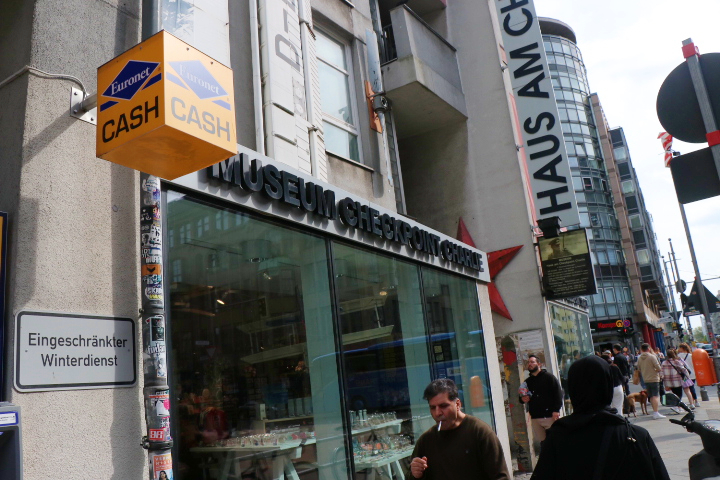
The Wall Museum, also called “Museum Haus am Checkpoint Charlie”.
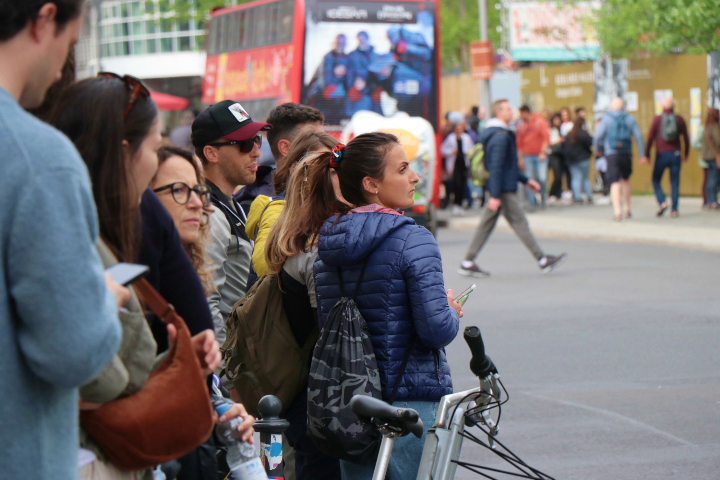
” In every book and every travel guide you can read about Checkpoint Charlie. It’s a worldwide phenomenon.” Cornelia Thiele head of the collections of the Berlin Wall Foundation, says.

“Checkpoint Charlie is a no go area for Berliners and it has been for years now. It’s a pure touristic area.” Cornelia Thiele says
“Our museum was opened just after the wall was built, as a protest against the wall and as residence against the wall”, Alexandra Hildebrandt, director of the museum says. Her now deceased husband Dr. Rainer Hildebrandt founded the museum in 1962.
Here you will find numerous objects that in some way resemble the time of the cold war. In the museum shop where you will end up after your visit, there is also an opportunity to buy your very own piece of the wall.
“My late husband took pieces of the wall and collected them. We have a lot of it, and we give visitors a possibility to buy it, small pieces, bigger pieces. It is a symbol of the end of the war, as long as the wall was up, people could not buy a piece of it. So if the people have the possibility to get the little pieces of the wall, this tells a lot. This tells us that the wall is no longer here. And these are the pieces of freedom.” Alexandra Hildebrandt says.
She doesn’t want to speculate whether pieces of the wall sold in other shops are real and emphasises that the museum only takes responsibility for their own pieces. The museum provides a certificate with every stone, assuring you that they are real.
“Everybody doubts if the pieces are real”

The paint on the stones is not authentic.

“Ich bin ein Berliner”, but the locals in Berlin rarely visit Checkpoint Charlie where you can buy this magnet.
“The management finds these authentic pieces as they claim from private collectors or sellers of the market, and then they have their own way to certify it, if it is okay they will bring it to a workshop, take it apart and put some colour on it”, says Arash, who works in the museum shop and does not want to share his last name. Being the one who meets the tourists of Berlin every day, he has a rare insight into the mindset of the buyers.
“Everybody doubts if the pieces are real, and they do not want to know, to be honest, if they are real or not, they just want the reassurance that I give them.” Arash says and continues “Even if I say that I don’t know or ‘maybe’, it is still a good chance that they will buy it and If I say yes, it is like I have given them the whole world.”
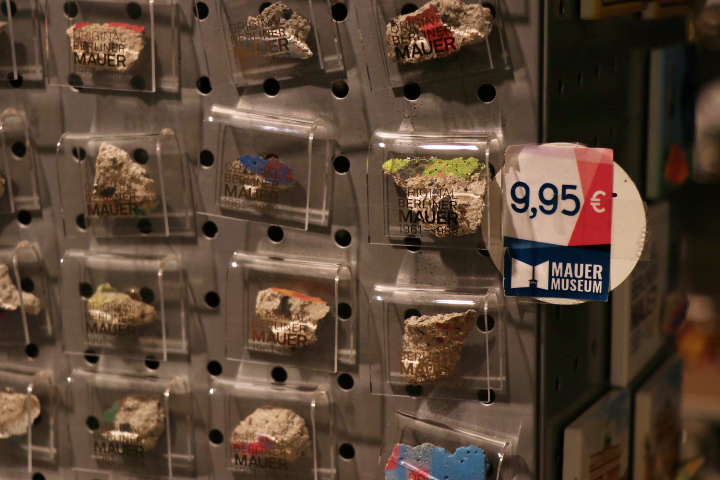
The display of the Berlin wall pieces comes in numerous variations.
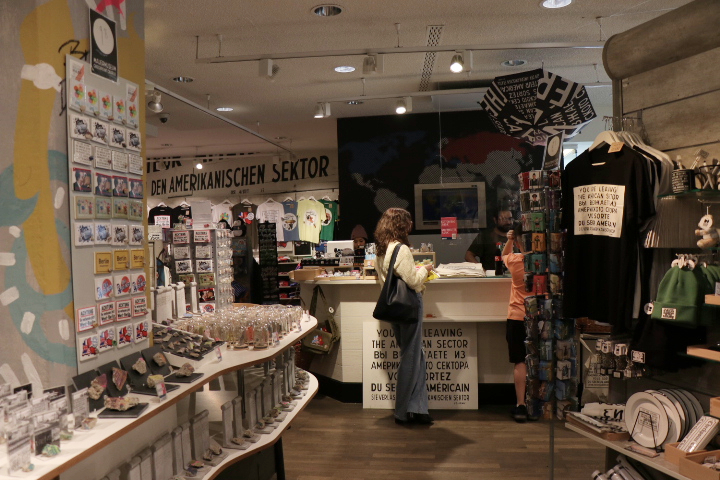
After you have finished your visit at the Wall museum, you end up in the shop of the museum.
The wallpeckers
As soon as the Berlin Wall fell people have always wanted a piece from it.
“ From the beginning there were these wallpeckers. People who came with their hammer and chisel and started to hammer out the small wall pieces. The next day, people started to sell these pieces to earn some money”, says Cornelia Thiele, head of the collections of the Berlin Wall Foundation.
“I don’t think it’s a good idea to buy wall pieces anymore”
The Wall foundation is responsible for five different locations where visitors can come and learn about the time of the wall. One of them is at Bernauer Strasse, in great contrast to the busyness at the famous crossing, here just a few minutes away the tempo is much calmer and there is a large part of the wall still standing. The Wall foundation is the central institution in Berlin and its responsibility is to protect the relics of the Berlin Wall. They don’t sell pieces of the Berlin wall in their shop and Cornelia Thiele is sceptical about the realness of the pieces sold in other places.
“I don’t think it’s a good idea to buy wall pieces anymore, especially not in areas like where there are a lot of tourists”, she says and continues,
“But I don’t want to remove the illusion from the tourists, they should have a good time and if they buy a piece of the wall and for them it’s a piece of the wall, then it’s a piece of the wall.”
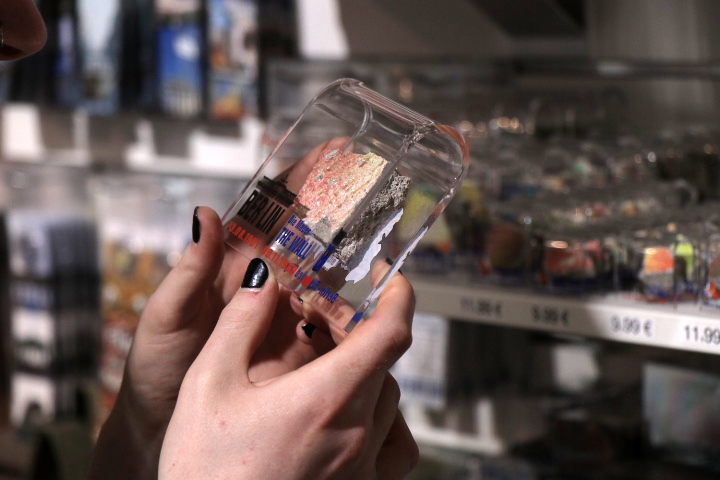
“Berliners are very connected to the wall”, Alexandra Hildebrandt says.

“They will forever sell pieces of the Berlin Wall”, Cornelia Thiele says.



